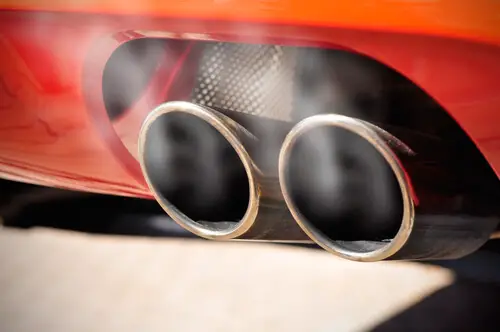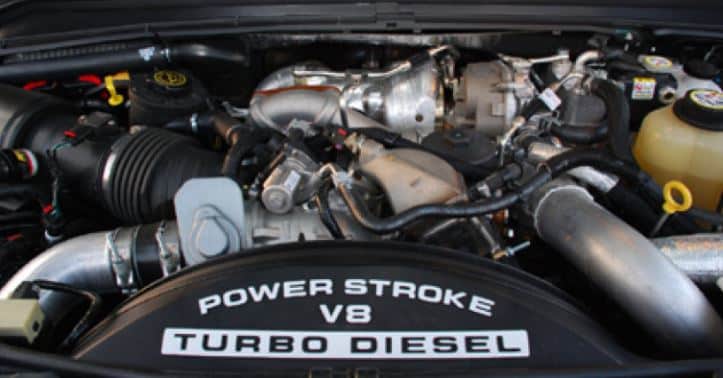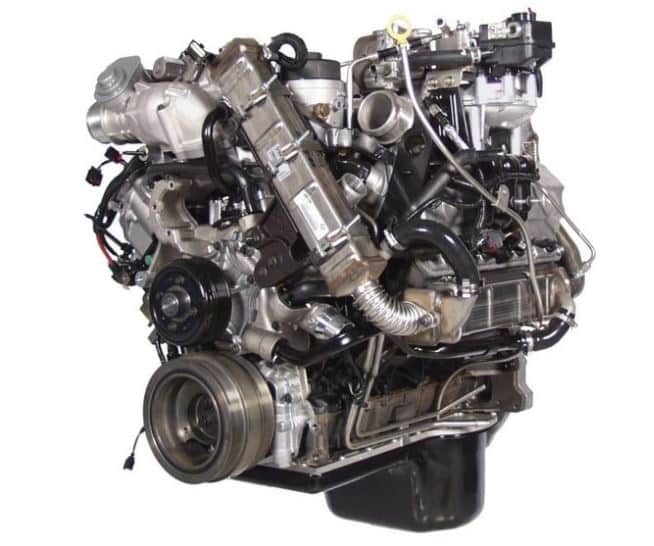
Table of Contents
Intro
A search on the internet for 6.4 Powerstroke will reveal that many owners of the vehicle engine have been battered with issues relating to fuel economy and overall performance. The 6.4 is actually a great engine. The problem is the emissions for the most part and owners who think they are driving a 7.3 and maintenance can go by the wayside. I will admit the 6.4 does have some downfalls but if taken care of properly there’s no reason it won’t last. We are starting to see lots of guys over 300k now with minimal issues. Also if these 6.4 are neglected they will be nothing but a headache. Unfortunately, one of the methods of resolving this issue has been to suggest a 6.4 Powerstroke EGR Delete. EGR delete is the tampering-to-render-useless or outright removal of the exhaust gas recirculation valve.
The Issue with Emissions
The exhaust gas recirculation valve mixes fresh air with fuel to return a small quantity of the exhaust gases into the intake manifold.

Exhaust gas
The intake manifold is the part of an engine that supplies the fuel-air mixture to the cylinder. The primary task of the intake manifold is to evenly distribute the combustion mixture to optimize the efficiency of the engine.
But why do automobile engines mix fresh air with fuel? Is that not counter-intuitive to reducing pollution?
You may or may not remember from your high school science class that air is made up of 21% oxygen, 78% nitrogen and 1% of harmless gases.
Oxygen is essential to burn fuel in the combustion chamber. On the other hand, nitrogen is an inert gas, and by that, it means it does not want to change or combine with any other elements – it’s happy just the way it is.
However, when the air is mixed with fuel and burns in the combustion chamber, the nitrogen in the air changes when the temperature levels surpass 2500 degrees Fahrenheit. The result of burning air and fuel in the combustion chamber of an engine at high temperatures is nitrogen oxide.
Nitrogen Oxide Emissions
Nitrogen oxide is a greenhouse gas the contributes to climate change. Nitrogen oxide is responsible for creating photochemical smog which often blocks the skyline of many cities across the world, engulfing the tall buildings in a mist.

Nitrogen oxide emissions and egr
California EGR Delete and Emissions Laws
EGR technology was first introduced in automobiles in 1972. California was the only state in America that required registered vehicles to have an EGR outfitted. However, within a year following California’s EGR mandate, the rest of the United States followed, through Federal Standards set out by the Environmental Protection Agency.
Furthermore, exhaust gas inert and by that, we mean that it cannot undergo any further burning because 99% of the oxygen has already been burnt. The inert gas recirculates into the combustion chamber with fresh air/fuel mixture and will dilute or thin it out. The exhaust gas also lowers the temperature in the combustion chamber so that less NOx is produced.
The EGR valve is bolted to the intake manifold, and it must regulate a precise amount of exhaust gas into the combustion chamber otherwise an excess amount of gas will cause the engine to stall and run very rough. The EGR valve is opened by a vacuum which is usually located under the throttle plates in the carburetor.
6.4 Power Stroke Engine
The 6.4L Power Stroke engine was introduced in the fourth quarter of 2007 for the Ford Super Duty models. The 6.4L’s predecessor the 6.0L did not fair to well to critics because vehicle owners have plagued with issue an issue with their Ford truck.

6.4 Power Stroke Engine
The engine itself was retired after the 2010 model year and replaced with a 6.7L Power Stroke. The engine was built with horsepower ratings of 350HP and a torque rating of up to 650 lb-ft. It also has a dual VGT compound-turbo system. Air is fed into the smaller turbo and fed into the larger one.
Problems with the emissions control devices, fuel system contamination, and leaking radiators have been common occurrences for owners of this Ford engine.
The diesel particulate filter didn’t respond well to clearing soot through the regeneration process. In a similar manner, the 2 EGR Coolers outfitted on the truck have been known to clog or crack. But does that justify EGR delete? Well, emissions control devices are not the only problem with this engine. A failed fuel -injection system and issues with the turbochargers will still leave you scratching your head.
Will EGR Delete Fix Your Major 6.4L Power Stroke Problems?
Here’s a bullet form list of the key problems with the 6.4L Power Stroke Ford Engine:
- Piston rings in the seventh and eight cylinders have functionality problems due to the DPF regeneration process
- The water pump impeller’s fast speed causes coolant to leak into the engine oil which causes cavitation erosion of the front cover.
- After 100,000 miles the higher pressure on the valve train causes the rocker arm tips to become damaged
- The high exhaust temperatures of the regeneration process cause the turbocharger bearing seals to leak.
- Lack of bronze sleeves on the cylinder head which causes oil leakage around valves
- EGR cooler lets engine coolant to flow back into the eight cylinders when the engine is turned off. This leads to the cylinder locking and bending the piston connecting rod upon the vehicle starting.
- High cost for repairs and modifications.
- Plastic Clips and Rocker oiling. This is very bad and is a problem on non-DPF deleted trucks
As an illustration, aftermarket tuning of the EGR delete has led to unnecessary fuel injection timing and cracking of cylinder heads because of high exhaust temperatures.

Major 6.4L Power Stroke Problems
To emphasize, EGR delete on its own won’t fix the other issues you have with the 6.4L Power Stroke. This is mainly because these model years of trucks were very early on in the EPA’s federal mandate for the emissions control device. Henceforth, they were not well-engineered because the development teams at these large truck manufacturers were more focused on complying with the new laws and pushing out the next model year than vehicle performance and customer satisfaction.
Nevertheless, the problems and issues of these emissions control devices have been sorted out over the years and the vehicles manufactured today are much more efficient at performing and at reducing pollution. For example, the 6.7 Power Stroke engine has shown far greater with fewer issues because many of the engineering failures were revisited and corrected.
Disadvantages of 6.4L Powerstroke EGR Delete
While these 6.4L engines experience a lot of problems, deleting the EGR can lead to quite a lot of problems as well. as an example, many people have experienced white smoke pouring out of exhaust and bad engine knock as a result of EGR delete.
Conclusion
It is self-explanatory that the 6.4L Power Stroke is just a poorly designed engine and even if you EGR delete, you are still looking at costly modifications to straight pipe the converters and diesel particulate filters.
Not to mention if you are caught, you will face hefty fines from the EPA. We recommend you skip out on purchasing the 6.4L power stroke engine and if you already own one, then consider an upgrade to a 6.7L Power Stroke
 by
by